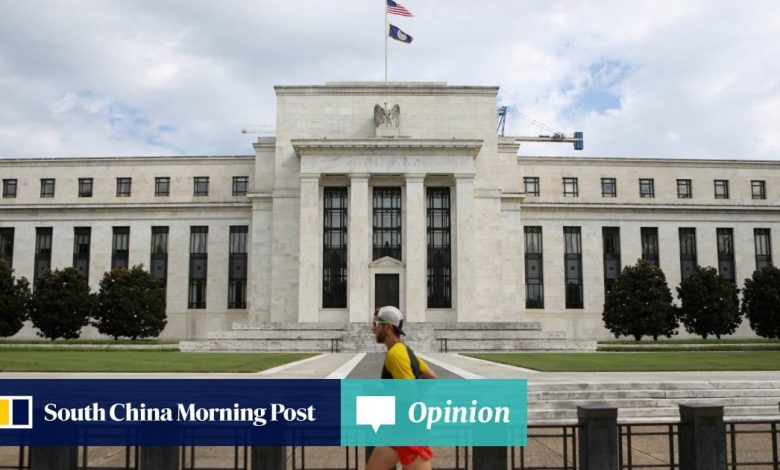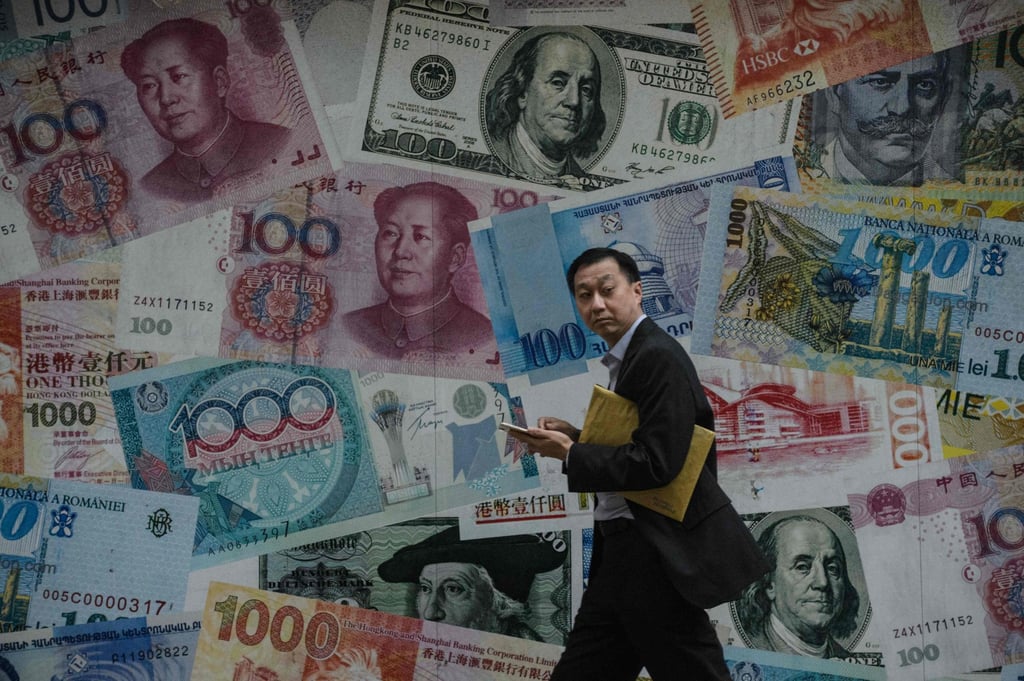Opinion | How America’s national debt has become the world’s liability

Put in perspective, the size of the global financial system per the Financial Stability Board at the end of 2022 was US$461 trillion, more than four times world gross domestic product (GDP). Banks accounted for 39.7 per cent of total financial assets, nonbank financial intermediaries for 47.2 per cent, central banks for 8.5 per cent and public financial institutions 4.6 per cent.
These used to scare financial regulators, as their notional value was as large as US$618 trillion, about a third larger than global total financial assets in 2022. However, the gross market value of over-the-counter derivatives, summing contracts with positive and negative values, was only US$20.7 trillion that year, according to data from the Bank for International Settlements.

The amount of money is less important than who owns it, owes it or controls it. Money, after all, is a human invention representing underlying assets, which governments can discover to be their liabilities.
Money is powerful because it can transform physical assets into liabilities that can be used as a unit of value, means of payment and store of value. Money can buy assets and labour, but if abused, it can corrupt and destroy. So why is money as debt or equity of interest to you and me?
Technically, money is a legal contract or understanding between the holder and the issuer. Trust is critical because you will not hold money if you do not trust the issuer. The debt contract is one in which the money is returned after an agreed date, often at an agreed interest rate. An equity contract is ownership in the issuer. The key difference between the two is that equity is “risk-sharing” and debt is “risk-transfer”.
The investor shares the risk through equity in the company, which is fair. Meanwhile, banks typically transfer risks to the borrower. That is why small borrowers consider debt and usurious interest rates by powerful moneylenders unjust.

Growth is all about how an institution is funded by debt or equity, namely its capital structure. Nobel laureate economists Franco Modigliani and Merton Miller argued that the value of a company is the same irrespective of whether it is funded by debt or equity. This might hold true if one assumes a market of perfect information, zero transaction costs and no bankruptcies. In its revised form, the Modigliani-Miller theorem accepted that leverage matters – common sense tells us that the overleveraged borrower is riskier than a fully equity-funded company.
The world is in a fascinating state because the US is the most powerful financial empire, accounting for 40 per cent of global stock market capitalisation value, even though it is less than 5 per cent of the world population and 26 per cent of global GDP.
But the US dollar is not only dominant as an invoicing currency for payment, but also as a store of value, since its return on investment is superior to investing in euro, sterling, yen or renminbi assets. The return on investment in US dollars has outperformed others for decades, especially since bond market and interest yields on debt are roughly the same across different markets.
As long as the US corporate sector delivers value through superior marketing, branding and innovation, even though manufacturing is outsourced to China and other markets, the US dollar’s role is unlikely to be challenged.

In short, the US is the world’s largest too-big-to-fail borrower, since the borrower is so large, none of the lenders or investors can afford the US to fail. In that sense, American debt is really equity, risk-shared with holders in US dollars.
The US can also unilaterally liquidate its liability since it just prints more dollars to repay its dollar debts. It can also confiscate dollar assets by foreigners if war with the enemy occurs. Now we know – debt is equity, but it’s not necessarily just. That is why dollar coins and notes say, “In God we Trust”.
Andrew Sheng comments on global affairs from an Asian perspective

